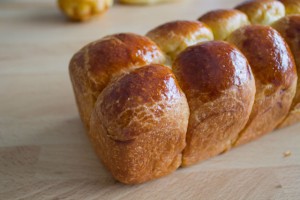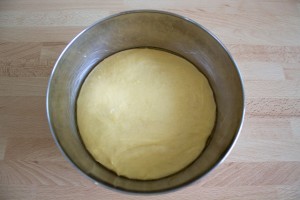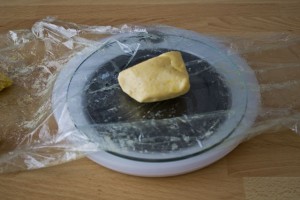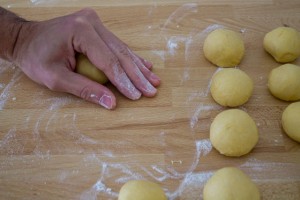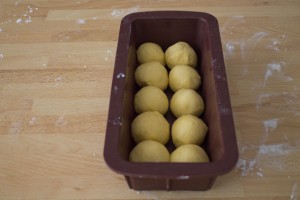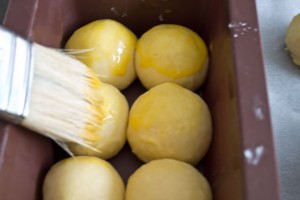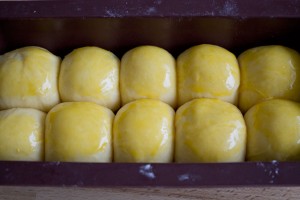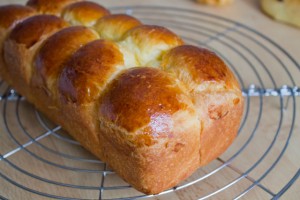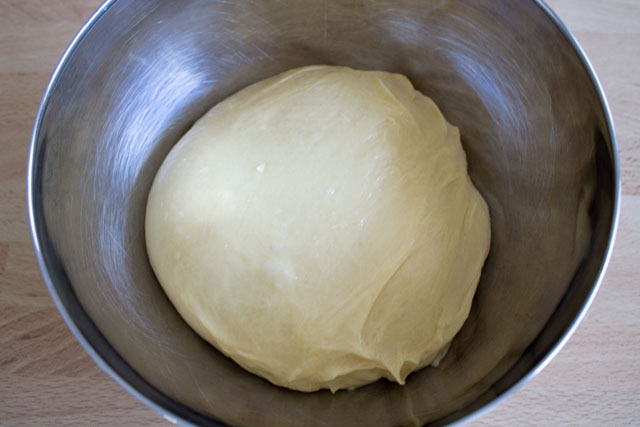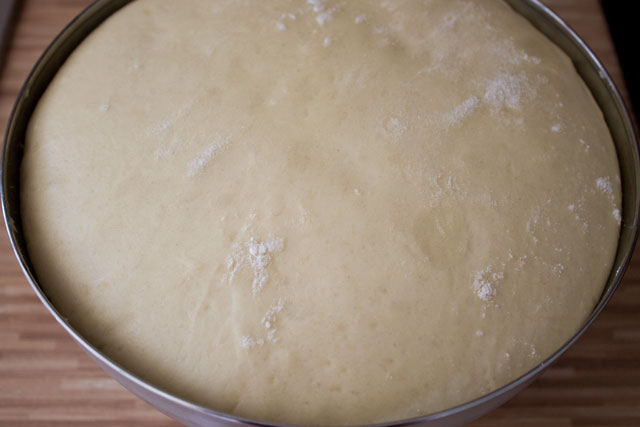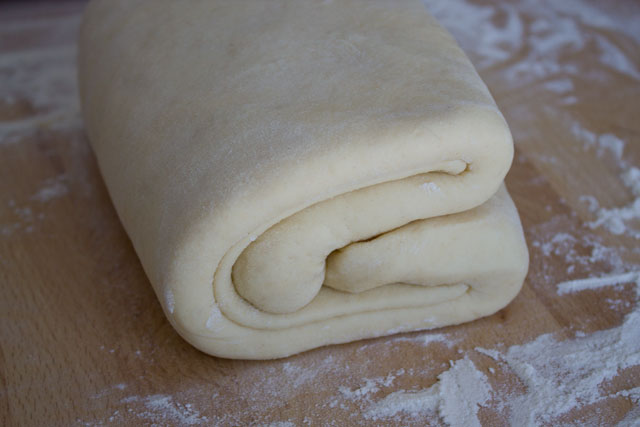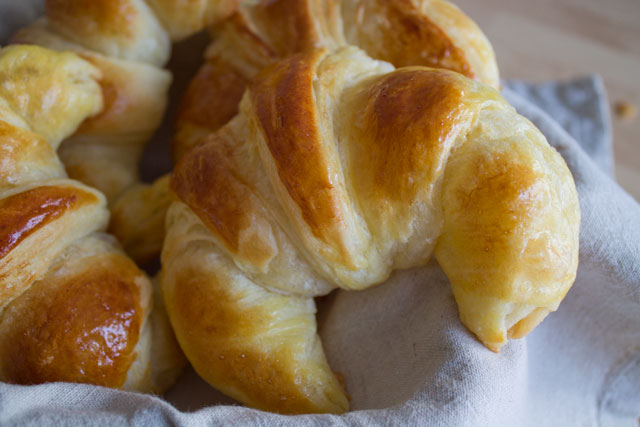Recipe: Brioche Nanterre
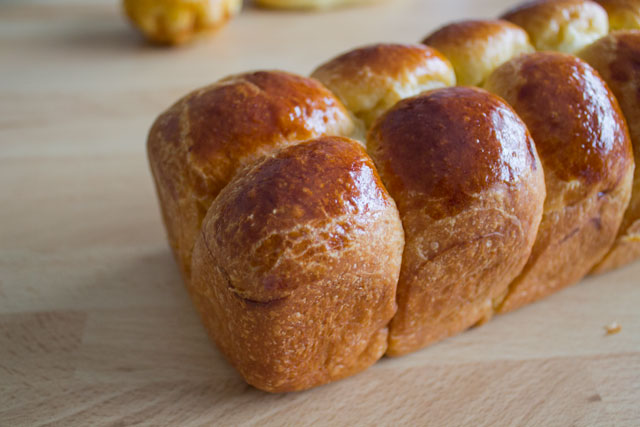
As I wrote in my previous post, brioches come in different sizes and shapes.
A famous type of brioche is the so-called “Nanterre“, from the name of a city near Paris.
It is baked in a standard bread loaf mould and it has a very recognizable pattern, obtained by arranging two rows of small pieces of dough in the pan. The small pieces of dough fuse during the proofing phase and rise even further in the oven, giving the brioche Nanterre its characteristic look.
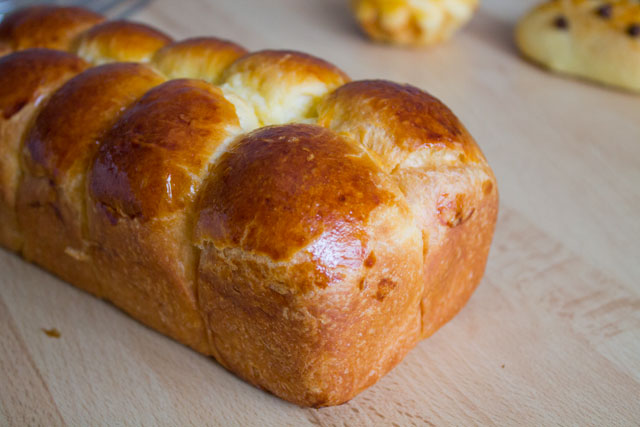
The step-by-step recipe below is for a 23cm mould and 300g of dough and it explains how to portion, proof and bake the brioche Nanterre.
Brioche Nanterre
Directions
2
To start making the brioche, take the dough out of the fridge and cut it in ten 30-gram pieces (yes, you have to weigh them one by one, otherwise the final brioche will look ugly!)
3
One by one, roll the pieces of dough into regular balls. To do this, you need to give elasticity to the dough by rolling it and slightly pressing it on the work surface (lightly flour it if needed). Keep your hand quite rigid in the same position as in the photo. The final rolled ball should look smooth and regular.
5
Brush them lightly with the beaten egg. Let the balls of dough proof ("rise") for a couple of hours or until doubled in size. Do not overproof.
6
At the end of the proofing phase, brush again the dough with eggwash and bake in the oven preheated at 180°C

 Print recipe
Print recipe